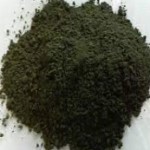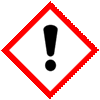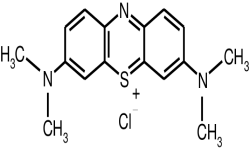CAS Number 61-73-4 for Anhydrous and 7220-79-3 for Trihydrate, Methylene Blue Methyl Thioninium Chloride USP BP Ph Eur Grade Manufacturers Exporters







CAS Number 61-73-4 for Anhydrous and 7220-79-3 for Trihydrate, Methylene Blue Methyl Thioninium Chloride Manufacturer Exporter
For Properties Specifications of Methylene Blue Methyl Thioninium Chloride Click Properties, Specifications of Methylene Blue Methyl Thioninium Chloride Manufacturer.
For Uses of Methylene Blue Methyl Thioninium Chloride Click Uses of Methylene Blue Methyl Thioninium Chloride Manufacturer.
For For SDS MSDS Sheet of Methylene Blue Methyl Thioninium Chloride Click SDS Safety Data Sheet MSDS Sheet of Methylene Blue Methyl Thioninium Chloride Manufacturer.
The Properties and Specifications of Methylene Blue Methyl Thioninium Chloride:
Methylene Blue USP Grade Specifications
Methylene Blue
C16H18ClN3S-3H2O -- 373.90
Phenothiazin-5-ium, 3,7-bis(dimethylamino)-, chloride, trihydrate.
C.I. Basic Blue 9 trihydrate CAS 7220-79-3
Anhydrous 319.86 CAS 61-73-4
Methylene Blue contains not less than 98.0 percent and not more than 103.0 percent of C16H18ClN3S, calculated on the dried basis.
Identification: Infrared Absorption 197K .
Loss on drying: Dry it at 75 and at a pressure not exceeding 5 mm of mercury for 4 hours: it loses between 8.0% and 18.0% of its weight.
Residue on ignition: not more than 1.2%.
Arsenic: Prepare the Test Preparation by mixing 0.375 g with 10 mL of water in the arsine generator flask. Add 15 mL of nitric acid and 5 mL of perchloric acid, mix, and heat cautiously to the production of strong fumes of perchloric acid. Cool, wash down the sides of the flask with water, and again heat to strong fumes. Again cool, wash down the sides of the flask, and heat to fumes. Cool, dilute with water to 52 mL, and add 3 mL of hydrochloric acid: the resulting solution meets the requirements of the test, the addition of 20 mL of 7 N sulfuric acid specified for Procedure being omitted. The limit is 8 ppm.
Copper or zinc: Ignite 1.0 g in a porcelain crucible, using as low a temperature as practicable, until all of the carbon is oxidized. Cool the residue, add 15 mL of 2 N nitric acid, and boil for 5 minutes. Filter the cooled solution, and wash any residue with 10 mL of water. To the combined filtrate and washing add an excess of 6 N ammonium hydroxide, and filter the solution into a 50 mL volumetric flask. Wash the precipitate with small portions of water, adding the washings to the filtrate, dilute the solution with water to volume, and mix. To 25 mL of the solution add 10 mL of hydrogen sulfide TS: no turbidity is produced within 5 minutes (absence of zinc). Any dark color produced does not exceed that of a control prepared by boiling a quantity of cupric sulfate, equivalent to 200 @g of copper, with 15 mL of 2 N nitric acid for 5 minutes and by treating this solution as directed above, beginning with “Filter the cooled solution” (0.02% of copper).
Chromatographic purity: To pass the test.
Methyl thioninium Chloride BP or Methyl thioninium Chloride Ph. Eur is also supplied.
The Uses of Methylene Blue Methyl Thioninium Chloride:
Methylene blue is a dye that was first developed to stain and inactivate certain microbes. Methylene blue injection is used to treat a condition called methemoglobinemia.
The MSDS-SDS Hazard Statement of Methylene Blue Methyl Thioninium Chloride:
Methylene Blue SDS, Safety Data Sheet
MSDS Sheet, Material Safety Data Sheet 15-Jan-23
1. Product Identification
Product Name & Other Names:Methylene Blue or Basic Blue 9,trihydrate or Methylene blue trihydrate or 3,7-Bis(dimethylamino)phenazathionium chloride trihydrate or Methylthioninium Chloride.
CAS No.:61-73-4 (Anhydrous); 7220-79-3 (Trihydrate)
EINECS EC Number: 200-515-2
Molecular Weight: 373.91
Chemical Formula: C16H18ClN3S-3H2O
Relevant uses and uses advised against (if any): Industrial Manufacturing.
2. Hazards Identification
GHS, Globally Harmonized System Classification in accordance with 29 CFR 1910
Classification according to Regulation (EC) No 1272/2008
Acute toxicity, oral Category 4, H302
Skin corrosion/irritation Category 2, H315
Serious eye damage/eye irritation Category 2A, H319
Specific target organ toxicity, single exposure; Respiratory tract irritation Category 3, H335
Labeling according to Regulation (EC) No 1272/2008
GHS Label Elements  Irritant |
Signal Words: Warning
Hazard statements:
H302: Harmful if swallowed.
H315: Causes skin irritation.
H319: Causes serious eye irritation.
H335: May cause respiratory irritation.
Precautionary statements:
P262: Do not get in eyes, on skin, or on clothing.
P264: Wash skin thoroughly after handling.
P280: Wear protective gloves/protective clothing/eye protection/face protection.
P270: Do not eat, drink or smoke when using this product.
P273: Avoid release to the environment.
P330: Rinse mouth.
P362: Take off contaminated clothing and wash before reuse.
P301+312: IF SWALLOWED: Call a POISON CENTER or doctor/physician if you feel unwell.
P332+313: If skin irritation occurs: Get medical advice/attention.
P302+P352: IF ON SKIN: Wash with plenty of soap and water.
P305+P351+P338: IF IN EYES: Rinse cautiously with water for several minutes. Remove contact lenses, if present and easy to do. Continue rinsing.
P332+313: If skin irritation occurs: Get medical advice/attention.
P337+P313 If eye irritation persists: Get medical advice/ attention.
3. Composition/Information on Ingredients
Product Name & Other Names:Methylene Blue or Basic Blue 9,trihydrate or Methylene blue trihydrate or 3,7-Bis(dimethylamino)phenazathionium chloride trihydrate or Methylthioninium Chloride.
CAS No.:61-73-4 (Anhydrous); 7220-79-3 (Trihydrate)
EINECS EC Number: 200-515-2
4. First Aid Measures
Always seek medical attention after first aid measures are provided.
Inhalation:Remove to fresh air. Give oxygen if breathing is difficult; give artificial respiration if breathing has stopped. Keep person warm and quiet; get medical attention.
Ingestion:Induce vomiting immediately as directed by medical personnel. Never give anything by mouth to an unconscious person.
Skin Contact: Immediately flush skin with plenty of soap and water for at least 15 minutes. Remove contaminated clothing and shoes. Wash clothing before reuse. Thoroughly clean shoes before reuse. Get medical attention if irritation develops.
Eye Contact: Immediately flush eyes with plenty of water for at least 15 minutes, lifting upper and lower eyelids occasionally. Get medical attention.
5. Fire Fighting Measures
Fire: May become a fire hazard at high temperatures.
Fire Extinguishing Media: Use water spray, alcohol-resistant foam, dry chemical or carbon dioxide.
Special hazards arising from the substance or mixture: Carbon oxides, Nitrogen oxides (NOx), Sulfur oxides, Hydrogen chloride gas.
Special Information: In the event of a fire, wear full protective clothing and NIOSH-approved self-contained breathing apparatus with full face piece operated in the pressure demand or other positive pressure mode. At high temperatures under fire conditions, it may produce toxic or irritating fumes. Fire-extinguishing work is done from the windward and the suitable fire-extinguishing method according to the surrounding situation is used.
6. Accidental Release Measures
Personal precautions, protective equipment and emergency procedures: Use personal protective equipment. Avoid dust formation. Avoid breathing dust/fumes/gas/mist/vapors/spray. Use individual protective equipment (waterproof boots, suitable protective clothing, safety glasses, etc.). Do not approach facing the wind.
Environmental precautions: Do not let the product enter drains, soil or water sources.
Methods and materials used for containment Cleanup procedures and Storage: Contain spilled material. Cover with an inert, non-combustible absorbent material, (e.g. sand, earth, diatomaceous earth, vermiculite). Vacuum or sweep-up and remove to an approved disposal container.
7. Handling and Storage
Precautions for safe handling: Apply according to good manufacturing and industrial hygiene practices. Ensure proper ventilation. Wash thoroughly after handling. Do not drink, eat or smoke while handling. Avoid contact with skin, eyes and clothing. Minimize dust generation. Avoid breathing dust/fumes/gas/mist/vapors/spray. Keep container tightly closed. Avoid ingestion and inhalation. Use individual protective equipment (waterproof boots, suitable protective clothing, safety glasses, etc.).
Conditions for safe storage, including any incompatibilities: Store in cool, dry and ventilated area away from heat sources and protected from sunlight in tightly closed original container. Keep air contact to a minimum. Do not leave the material container open. Store protected from heat, sparks and ignition sources and incompatible materials. Avoid contact with skin and eyes. Avoid inhalation of dust/mist/vapor. Do not store with incompatible materials like strong oxidizing agents, alkali, dichromates, alkali iodides, reducing agents. Avoid dust formation and control ignition sources.
8. Exposure Controls/Personal Protection
Airborne Exposure Limits: None established.
Ventilation System: In general, dilution ventilation is a satisfactory health hazard control for this substance. However, if conditions of use create discomfort to the worker, a local exhaust system should be considered.
Personal Respirators (NIOSH Approved): Not expected to require personal respirator usage. For conditions of use where exposure to dust or mist is apparent and engineering controls are not feasible, a particulate respirator (NIOSH type N95 or better filters) may be worn.
Skin Protection:Wear protective gloves and clean body-covering clothing.
Eye Protection: Use chemical safety goggles and/or full face shield where dusting or splashing of solutions is possible. Maintain eye wash fountain and quick-drench facilities in work area.
Other Control Measures: Maintain good housekeeping in work area. Handle in accordance with good industrial hygiene and safety practice.
9. Physical and Chemical Properties
Appearance: Methylene Blue is dark green crystals with bronze luster or crystalline powder.
Odor: Odorless.
Odor threshold: Not available.
pH: Not available.
Relative density: Not available.
Boiling Point: Decomposes.
Melting Point: 190C
Flash point: Not available.
Auto-ignition temperature: Not available.
Decomposition temperature: Not available.
Upper/lower flammability or explosive limits: Not available.
Vapor pressure: Not available.
Vapor density: Not available.
Evaporation rate: Not available.
Flammability (solid, gas): Not available.
Partition coefficient: n-octanol/water: Not available.
Solubility: Soluble in water.
Viscosity: Not available.
10. Stability and Reactivity
Stability: Methylene Blue is stable under ordinary conditions of use and storage.
Hazardous Decomposition Products: May produce oxides of nitrogen, sulfur and carbon along with chlorine compounds when heated to decomposition.
Hazardous Polymerization: Will not occur.
Incompatibilities: Strong oxidizing agents, alkali, dichromates, alkali iodides, reducing agents.
Conditions to Avoid: Heat, flame, ignition sources, dusting and incompatibles.
11. Toxicological Information
Methylene Blue: 1180 mg/kg LD50 oral rat. Investigated as a mutagen, reproductive effector.
Carcinogenic Effects: Not a reported carcinogen by IARC, NTP, ACGIH, OSHA.
12. Ecological Information
Environmental Fate: When released into the soil, this material is not expected to evaporate significantly. When released into water, this material is not expected to evaporate significantly. This material is not expected to significantly bioaccumulate. When released into the air, this material is expected to be readily degraded by reaction with photochemically produced hydroxyl radicals.
Results of PBT and vPvB assessment: This substance/mixture contains no components considered to be either persistent, bioaccumulative and toxic (PBT), or very persistent and very bioaccumulative (vPvB) at levels of 0.1% or higher.
13. Disposal Considerations
Whatever cannot be saved for recovery or recycling should be managed in an appropriate and approved waste disposal facility.
14. Transport Information
DOT USA, TDG Canada & ADR/RID Europe: Not controlled.
IATA/ICAO: Not controlled.
IMDG/IMO: Not controlled.
15. Regulatory Information
USA:
SARA 311/312 Hazardous Categorization: See sectin 2..
California Proposition 65: This product does not contain any Proposition 65 chemicals.
16. Other Information
DISCLAIMER: The information and recommendations set forth hereinare presented in good faith and believed correct as of the date hereof. It is compiled from various sources and it is not necessarily all inclusive nor fully adequate in every circumstance. In addition, these suggestions should not be confused with nor followed in violation of applicable laws, regulations, rules or insurance requirements applicable. This MSDS sheet is intended only as a guide to the appropriate precautionary handling of the material by a properly trained person using this product. Individuals receiving the information must exercise their independent judgment in determining its appropriateness for a particular purpose.
Anmol Chemicals & Pharmaceuticals Pvt. Ltd. is an off-shoot of Anmol Chemicals Taloja. It is located in MIDC Taloja and it is manufacturing pharmaceutical grades of API, Excepients, Food grade and Reagent grade chemicals. Anmol Chemicals & Pharmaceuticals Pvt. Ltd. is a several decades old group of companies, engaged in manufacturing, supplying, distributing, wholesale supplies for actual users, retail or small pack supplies for research and development chemicals, fine and speciality chemicals, pharmaceutical excipients, mineral fortifiers in chemically pure, Analytical reagent grade, IP BP USP Ph Eur EP JP and other pharmaceutical grade monograph including FCC Food grade chemicals and Nutraceuticals, Mineral Fortifiers at best prices.

Methylene Blue Methyl Thioninium Chloride Structure
CAS Number 61-73-4 for Anhydrous and 7220-79-3 for Trihydrate, Methylene Blue Methyl Thioninium Chloride Manufacturer Exporter
ANMOL CHEMICALS & PHARMACEUTICALS Pvt. Ltd.
India, USA, Europe, UAE
TELEPHONE: +912223770100
Navi Mumbai, INDIA
e-mail: info(At the rate i.e. @)anmol.org
Copyright. 25-nov-24
We manufacture:
Glacial Acetic Acid Manufacturer

